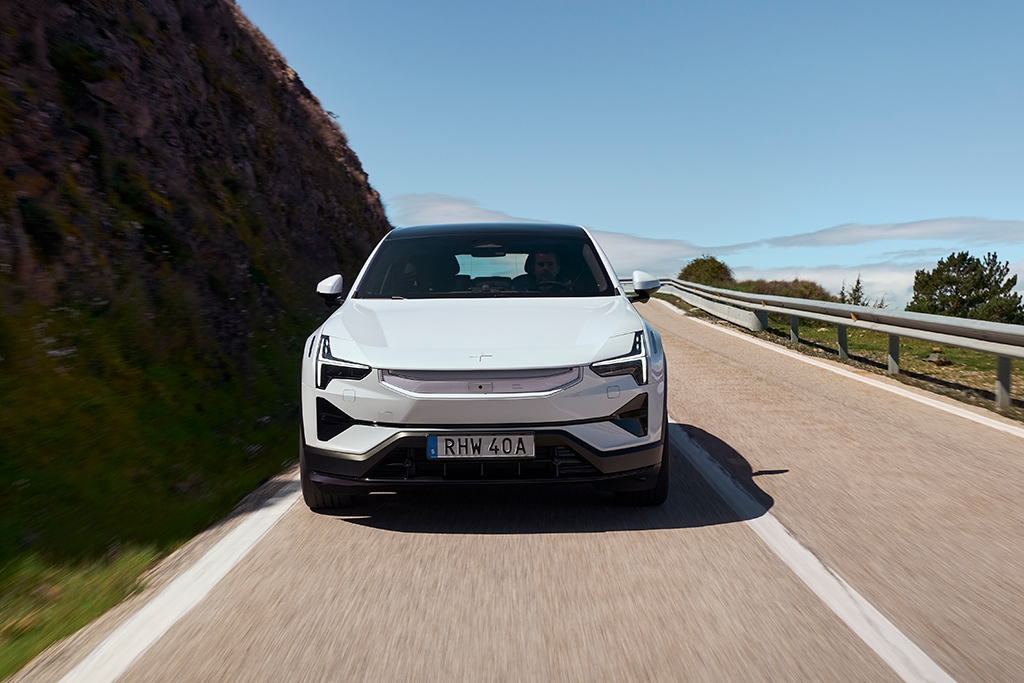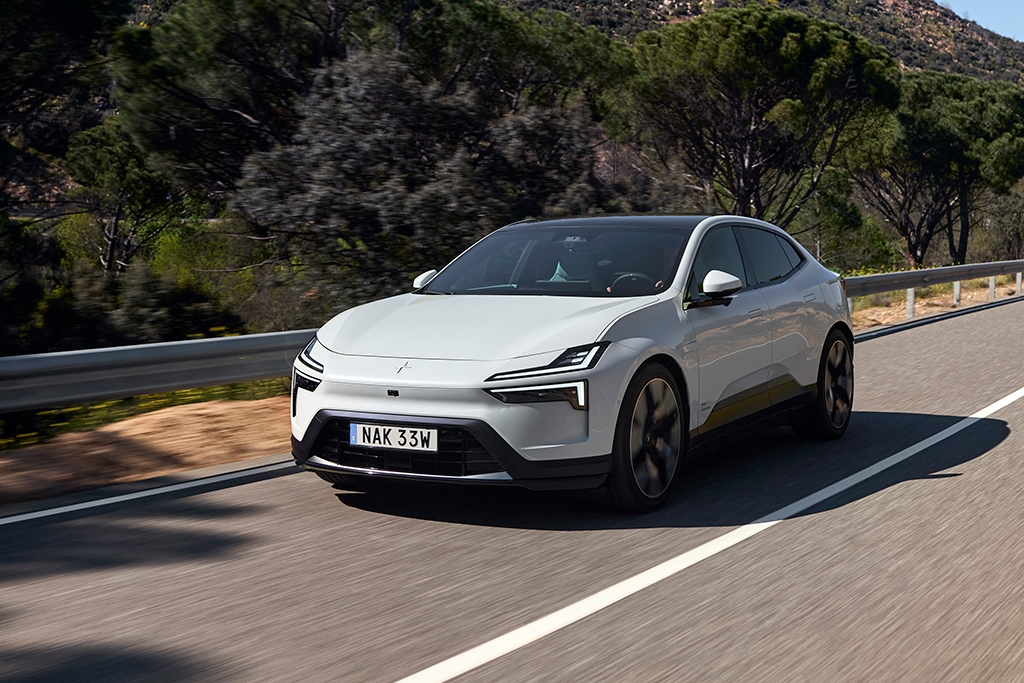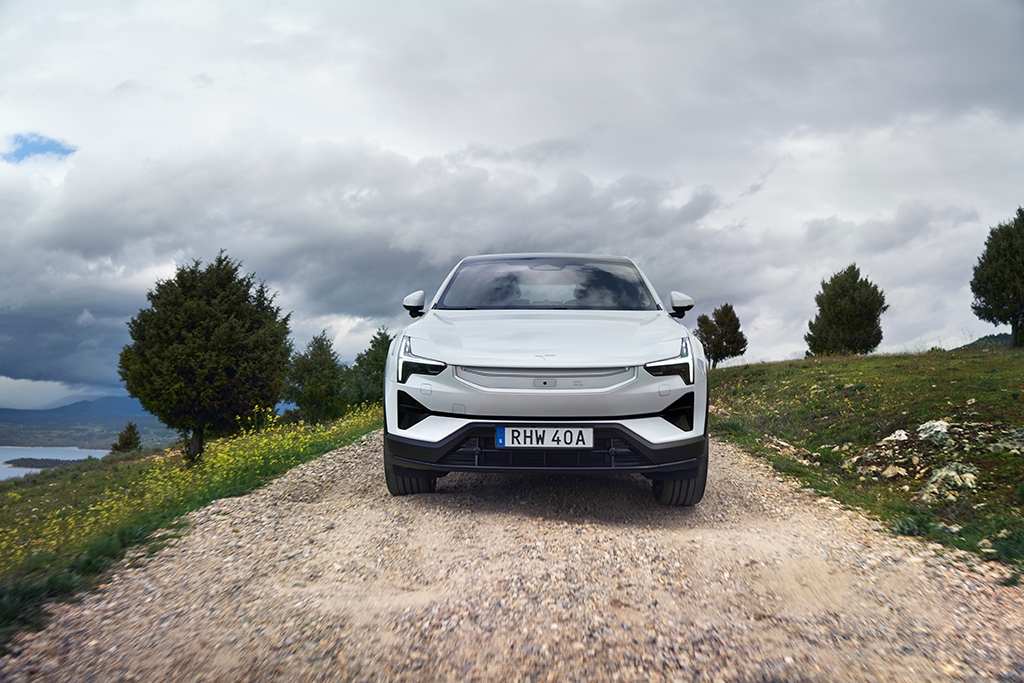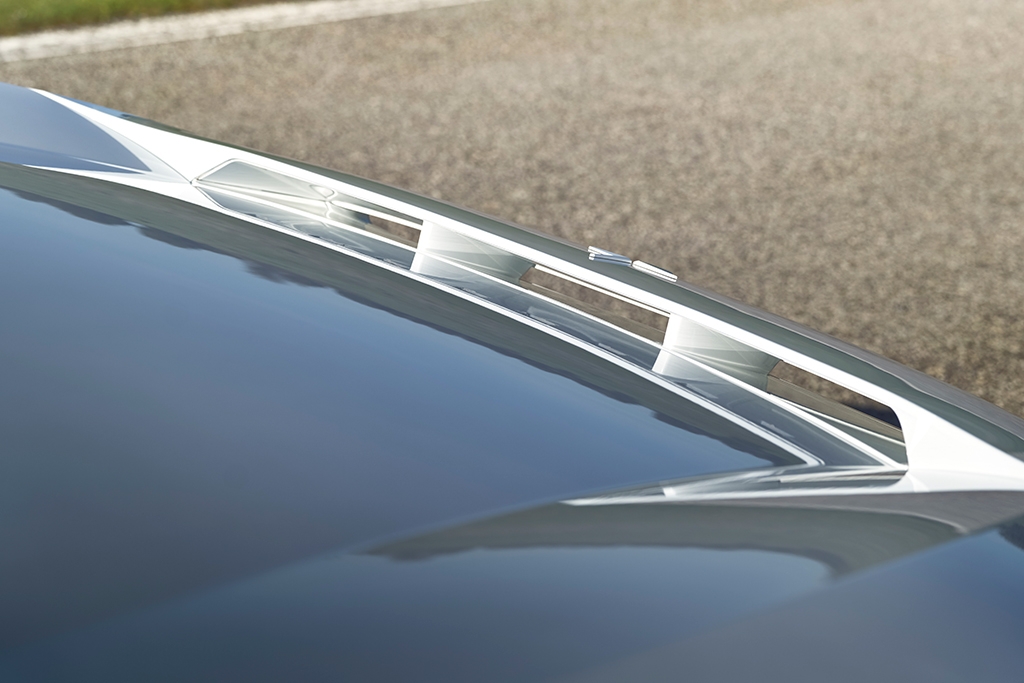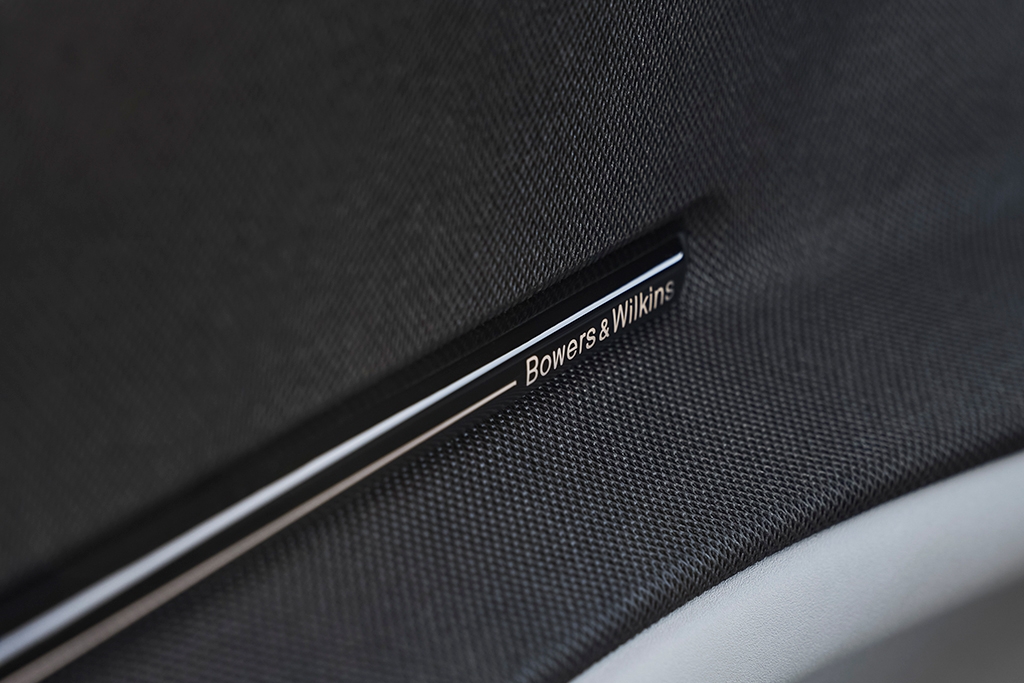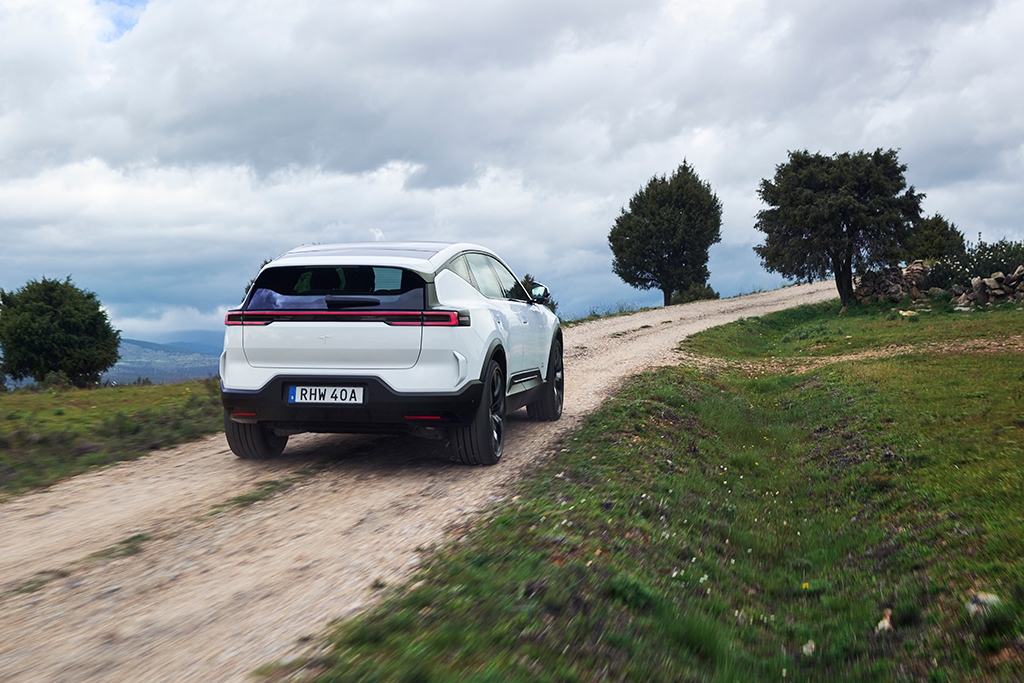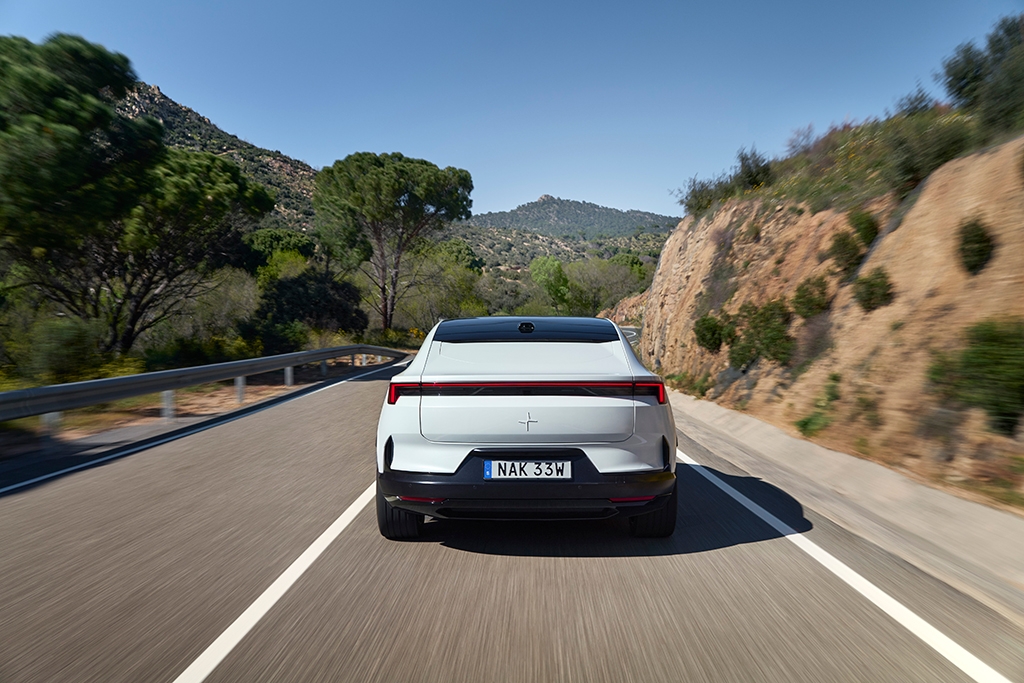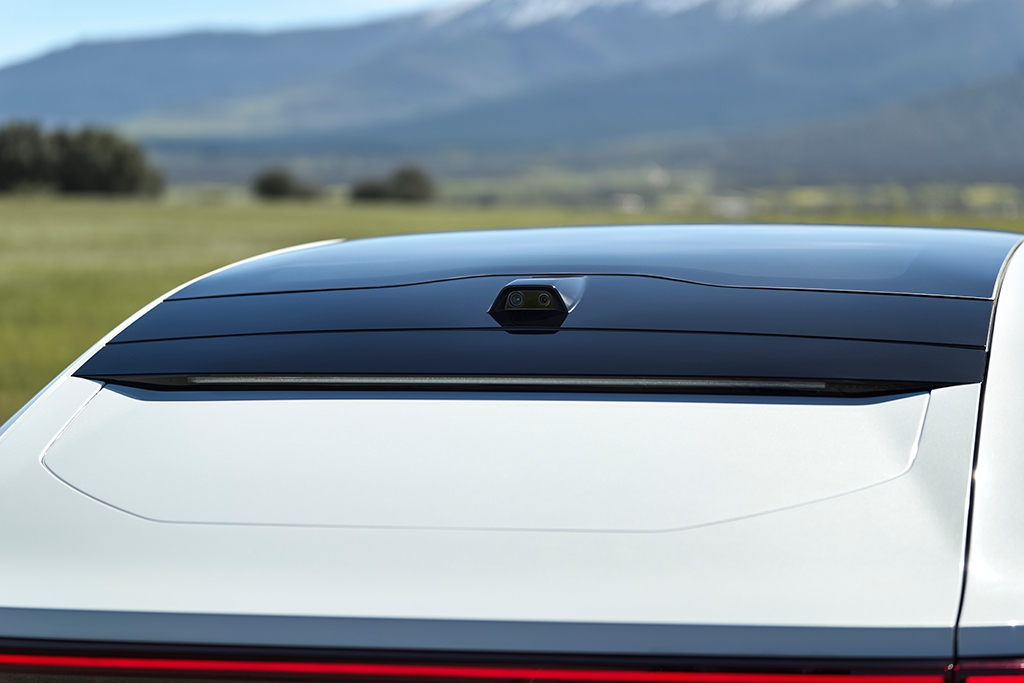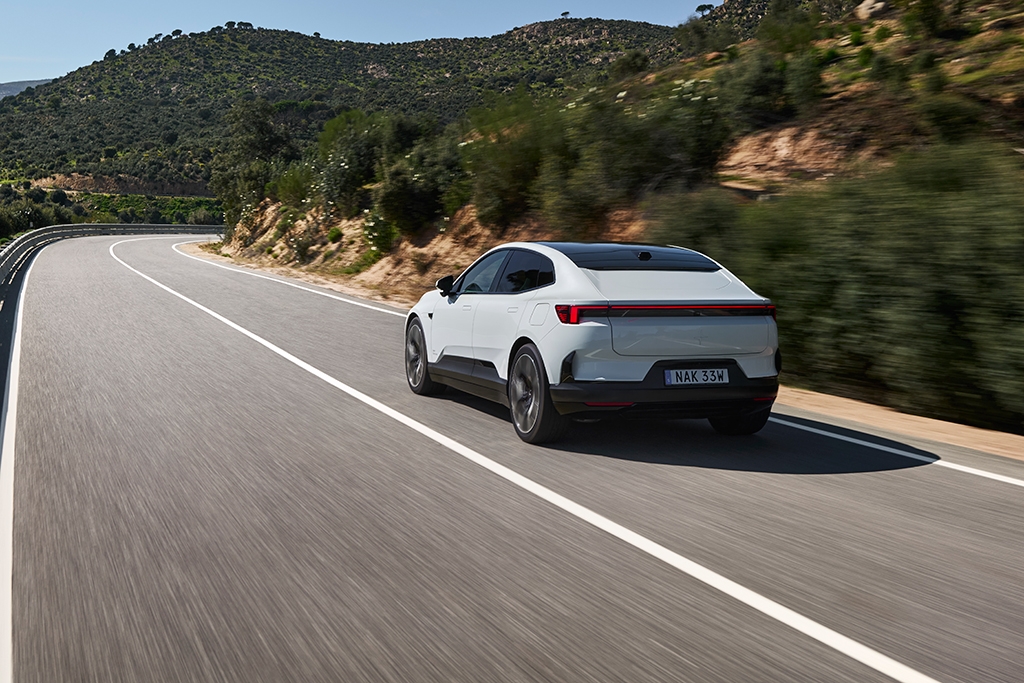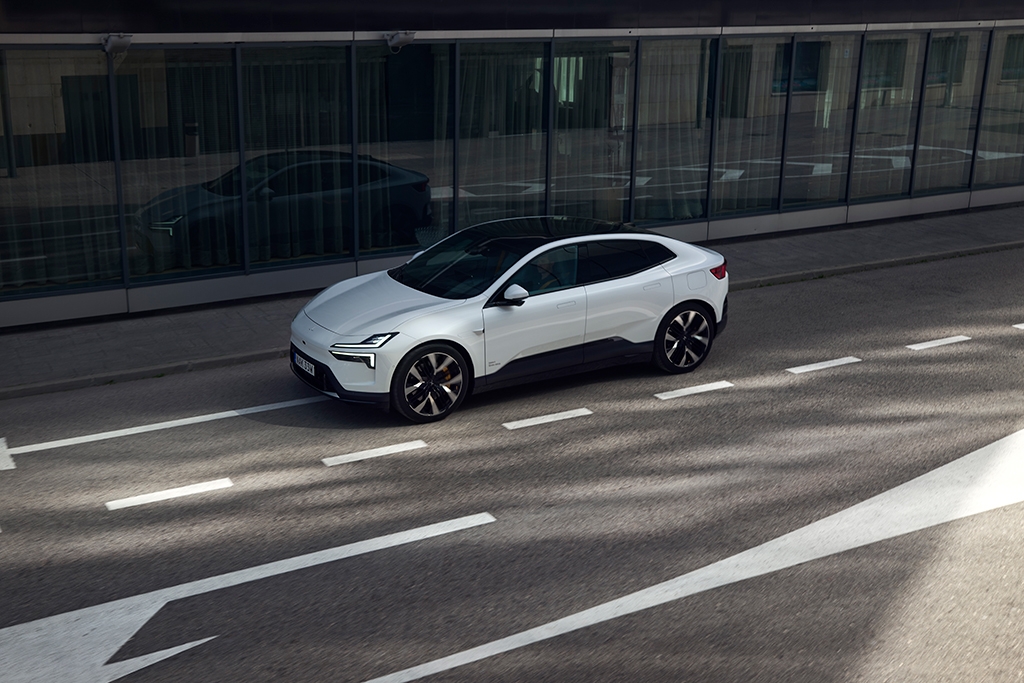Polestar expands model lineup with new Polestar 3 and 4
16 May 2024|3,971 views
In 2017, when it was announced that Polestar would be carved out from Volvo to become a standalone brand, the Polestar 1 was introduced. (For those interested, one example is currently on display at the Polestar Singapore showroom!) Limited to 1,500 units, the Polestar 1 was indicative of the direction of the brand: Electric performance. Since then, just one series production model has been introduced - the Polestar 2, launched to markets in 2020.
Despite being a relatively new, upstart brand, Polestar has not been shy about its ambitions, aiming to launch one new model in every successive year starting from 2023. However, production delays saw that timeline pushed back slightly, which is why two models are being introduced this year - the Polestar 3 and the Polestar 4, with the global press drive of both taking place in Madrid, Spain. Both cars are also set to be launched in Singapore quite soon.
While the sequential nomenclature of Polestar's cars is straightforward, the actual positioning of these two models isn't quite so simple. The Polestar 3, a premium mid-size SUV, now serves as the range-topping model of the Polestar lineup. The Polestar 4, a coupe-SUV (or SUV coupe, however you want to call it), actually fits size-wise between the 2 and 3. And while both are 'SUV'-type models with similar overall sizes and dimensions, they are in fact built on different platforms.
Unpacking the Polestar 3
The Polestar 3 is the more conventional offering, targeting a highly popular and growing premium electric SUV segment. Size-wise, it measures 4,900mm long, 2,120mm wide, 1,614mm tall, and has a 2,985mm wheelbase. Of note is the height - Polestar's designers and engineers purposefully economised parts of the car, such as having a fixed panoramic glass roof (which eliminates the roof liner), to help reduce the car's overall height without compromising headroom.
The front fascia features a SmartZone grille similar to the one on the Polestar 2, and also has the recognisable dual blade head light design. A subtly integrated front wing helps to smooth out air flow and improve overall aerodynamic efficiency. At the rear, a rear wing and aero blades on the flanks of the rear bumper also contribute to aerodynamic efficiency, which allows the Polestar 3 to have a drag coefficient of 0.29Cd.
While the interior retains the Scandi aesthetic already found in the Polestar 2, the Polestar 3 takes it up a notch, both in terms of functionality and quality. The large 14.5-inch portrait infotainment system has had its interface reworked - a large part of the real estate is occupied by Google Maps (the system runs on the Android Automotive OS, so Google apps come as standard), while below it are the two widgets that drivers will use most: Media and Telephone. Below that are a row of shortcuts, followed by climate control functions at the bottom. The system also now supports wireless Apple CarPlay (in the Polestar 2, it was wired only).
Also new is the 9.0-inch driver display, now fixed to the steering column. It offers key information like speed and battery status, but can also be configured to show navigation, or the driver assistance systems.
In a bid to move further upmarket, the Polestar 3 also features plenty of premium options, chief among which is the Bowers & Wilkins sound system (available as part of the optional Plus pack). With 25 speakers, 1,610W of power and supporting Dolby Atmos, it delivers a truly immersive soundscape.
Quality also goes hand in hand with sustainability. As standard, the car features MicroTech upholstery, carpets and headliner made from recycled plastic, and repurposed aluminium deco panels. There is also the option of 100% traced and animal welfare-secured wool and Nappa leather.
On the performance front, the Polestar 3 is available strictly as a dual-motor, with an additional Performance Pack that brings a power bump. As standard, the dual-motor setup produces 360kW and 840Nm of torque, while the Performance Pack model wields 380kW and 910Nm of torque. The 107kWh battery offers up to 628km of range on the Long Range Dual Motor variant, and up to 561km with the Performance Pack fitted, and can be charged at up to 250kW. The Polestar 3 also comes standard with adaptive air suspension with active dampers, and Torque Vectoring, Dual Clutch with rear motor disconnect.
Of course, a full range of Advanced Driver Assistance Systems (ADAS) are available, ranging from Adaptive Cruise Control and Lane Keeping Aid as standard, and Pilot Assist as an option.
Unpacking the Polestar 4
Where the Polestar 3 may be more traditional in its SUV leanings, the Polestar 4 is an altogether more progressive endeavour.
It starts with its design, of course. With its low nose and sleek silhouette, the Polestar 4 is clearly a more performance-oriented model (embracing the increasingly fashionable coupe-SUV positioning). In fact, it is presently the quickest and most powerful Polestar available. In a bid to stand apart and present a more extroverted personality, you will find distinct design touches like the illuminated front badge, as well as the split dual blade head lights.
Uniquely, the Polestar 4 does not have a rear windscreen. Instead, there is a 2.5 megapixel HD camera, which offers clarity and a wide range of vision
Most significant, however, is the stark decision to remove the rear windscreen altogether, with rearward vision instead facilitated by a HD camera (and accompanying digital rear view mirror). Part of this decision was to allow the designers to move the rear roof header backwards. What that means is that the panoramic glass roof stretches past the rear occupants heads, and the roof only notably tapers downwards past that point. This allows the car to have its sleek coupe silhouette, without the typical compromise in rear passenger head room that you may find in other coupe-SUVs.
Inside, there's again a clear effort to be more progressive. The main infotainment screen is a 15.4-inch landscape touch screen, divided into two zone. Within one permanently sits Google Maps, while the other contains four widgets. Interestingly, users can drag and slide to stretch the navigation zone to fill the whole screen is needed. The lower section houses shortcuts to frequently used functions, while a new shortcuts page can be configured to the user's preferences.
And in a fun and quirky touch, ambient lighting choices are organised not by colours, but rather by planets of our Solar System (and the Sun). Ambient lighting also peeks out from the "Star Knit" perforated deco panels on the doors.
The Polestar 4 also features a new steering wheel, with more controls housed within. All the controls on the left side are for the ADAS systems, while the controls on the right operate infotainment system functions. And, these controls are not all permanent. Some are, but others are contextual, meaning that they change depending on the relevant situation or prompt.
Being the most performance-oriented model, the Polestar 4 gets a dual-motor setup that produces 400kW and 686Nm of torque, and will completed the century sprint in 3.8 seconds (a single motor variant will be available later). The 100kWh battery will allow the car to cover up to 590km on a single charge, while maximum DC charging at 200kW can top up the car from 10 to 80% in 30 minutes.
Similarly, the Polestar 4 will also be offered with the full ADAS range.
Both the Polestar 3 and Polestar 4 are slated to be launched in Singapore in Q3 this year. Stay tuned for our first driving impressions of both cars, coming soon!
In 2017, when it was announced that Polestar would be carved out from Volvo to become a standalone brand, the Polestar 1 was introduced. (For those interested, one example is currently on display at the Polestar Singapore showroom!) Limited to 1,500 units, the Polestar 1 was indicative of the direction of the brand: Electric performance. Since then, just one series production model has been introduced - the Polestar 2, launched to markets in 2020.
Despite being a relatively new, upstart brand, Polestar has not been shy about its ambitions, aiming to launch one new model in every successive year starting from 2023. However, production delays saw that timeline pushed back slightly, which is why two models are being introduced this year - the Polestar 3 and the Polestar 4, with the global press drive of both taking place in Madrid, Spain. Both cars are also set to be launched in Singapore quite soon.
While the sequential nomenclature of Polestar's cars is straightforward, the actual positioning of these two models isn't quite so simple. The Polestar 3, a premium mid-size SUV, now serves as the range-topping model of the Polestar lineup. The Polestar 4, a coupe-SUV (or SUV coupe, however you want to call it), actually fits size-wise between the 2 and 3. And while both are 'SUV'-type models with similar overall sizes and dimensions, they are in fact built on different platforms.
Unpacking the Polestar 3
The Polestar 3 is the more conventional offering, targeting a highly popular and growing premium electric SUV segment. Size-wise, it measures 4,900mm long, 2,120mm wide, 1,614mm tall, and has a 2,985mm wheelbase. Of note is the height - Polestar's designers and engineers purposefully economised parts of the car, such as having a fixed panoramic glass roof (which eliminates the roof liner), to help reduce the car's overall height without compromising headroom.
The front fascia features a SmartZone grille similar to the one on the Polestar 2, and also has the recognisable dual blade head light design. A subtly integrated front wing helps to smooth out air flow and improve overall aerodynamic efficiency. At the rear, a rear wing and aero blades on the flanks of the rear bumper also contribute to aerodynamic efficiency, which allows the Polestar 3 to have a drag coefficient of 0.29Cd.
While the interior retains the Scandi aesthetic already found in the Polestar 2, the Polestar 3 takes it up a notch, both in terms of functionality and quality. The large 14.5-inch portrait infotainment system has had its interface reworked - a large part of the real estate is occupied by Google Maps (the system runs on the Android Automotive OS, so Google apps come as standard), while below it are the two widgets that drivers will use most: Media and Telephone. Below that are a row of shortcuts, followed by climate control functions at the bottom. The system also now supports wireless Apple CarPlay (in the Polestar 2, it was wired only).
Also new is the 9.0-inch driver display, now fixed to the steering column. It offers key information like speed and battery status, but can also be configured to show navigation, or the driver assistance systems.
In a bid to move further upmarket, the Polestar 3 also features plenty of premium options, chief among which is the Bowers & Wilkins sound system (available as part of the optional Plus pack). With 25 speakers, 1,610W of power and supporting Dolby Atmos, it delivers a truly immersive soundscape.
Quality also goes hand in hand with sustainability. As standard, the car features MicroTech upholstery, carpets and headliner made from recycled plastic, and repurposed aluminium deco panels. There is also the option of 100% traced and animal welfare-secured wool and Nappa leather.
On the performance front, the Polestar 3 is available strictly as a dual-motor, with an additional Performance Pack that brings a power bump. As standard, the dual-motor setup produces 360kW and 840Nm of torque, while the Performance Pack model wields 380kW and 910Nm of torque. The 107kWh battery offers up to 628km of range on the Long Range Dual Motor variant, and up to 561km with the Performance Pack fitted, and can be charged at up to 250kW. The Polestar 3 also comes standard with adaptive air suspension with active dampers, and Torque Vectoring, Dual Clutch with rear motor disconnect.
Of course, a full range of Advanced Driver Assistance Systems (ADAS) are available, ranging from Adaptive Cruise Control and Lane Keeping Aid as standard, and Pilot Assist as an option.
Unpacking the Polestar 4
Where the Polestar 3 may be more traditional in its SUV leanings, the Polestar 4 is an altogether more progressive endeavour.
It starts with its design, of course. With its low nose and sleek silhouette, the Polestar 4 is clearly a more performance-oriented model (embracing the increasingly fashionable coupe-SUV positioning). In fact, it is presently the quickest and most powerful Polestar available. In a bid to stand apart and present a more extroverted personality, you will find distinct design touches like the illuminated front badge, as well as the split dual blade head lights.
Uniquely, the Polestar 4 does not have a rear windscreen. Instead, there is a 2.5 megapixel HD camera, which offers clarity and a wide range of vision
Most significant, however, is the stark decision to remove the rear windscreen altogether, with rearward vision instead facilitated by a HD camera (and accompanying digital rear view mirror). Part of this decision was to allow the designers to move the rear roof header backwards. What that means is that the panoramic glass roof stretches past the rear occupants heads, and the roof only notably tapers downwards past that point. This allows the car to have its sleek coupe silhouette, without the typical compromise in rear passenger head room that you may find in other coupe-SUVs.
Inside, there's again a clear effort to be more progressive. The main infotainment screen is a 15.4-inch landscape touch screen, divided into two zone. Within one permanently sits Google Maps, while the other contains four widgets. Interestingly, users can drag and slide to stretch the navigation zone to fill the whole screen is needed. The lower section houses shortcuts to frequently used functions, while a new shortcuts page can be configured to the user's preferences.
And in a fun and quirky touch, ambient lighting choices are organised not by colours, but rather by planets of our Solar System (and the Sun). Ambient lighting also peeks out from the "Star Knit" perforated deco panels on the doors.
The Polestar 4 also features a new steering wheel, with more controls housed within. All the controls on the left side are for the ADAS systems, while the controls on the right operate infotainment system functions. And, these controls are not all permanent. Some are, but others are contextual, meaning that they change depending on the relevant situation or prompt.
Being the most performance-oriented model, the Polestar 4 gets a dual-motor setup that produces 400kW and 686Nm of torque, and will completed the century sprint in 3.8 seconds (a single motor variant will be available later). The 100kWh battery will allow the car to cover up to 590km on a single charge, while maximum DC charging at 200kW can top up the car from 10 to 80% in 30 minutes.
Similarly, the Polestar 4 will also be offered with the full ADAS range.
Both the Polestar 3 and Polestar 4 are slated to be launched in Singapore in Q3 this year. Stay tuned for our first driving impressions of both cars, coming soon!
Latest COE Prices
August 2025 | 1st BIDDING
NEXT TENDER: 20 Aug 2025
CAT A$102,009
CAT B$123,498
CAT C$70,001
CAT E$122,334
View Full Results Thank You For Your Subscription.




























